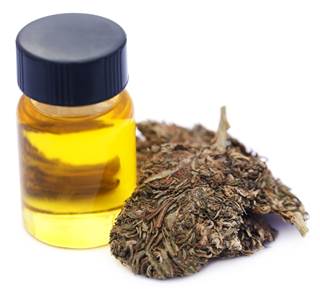CBD Cannabinoids can affect the levels of other anti-convulsants. ITs NOT straightforward. - JR
Neurology Today Conference Reporter: AES Annual Meeting
Monday, December 5, 2016
Cannabidiol Found to Change Blood Levels of Other Anti-Epileptic Drugs
BY JAMIE TALAN
HOUSTON—Cannabidiol oil can interact with anti-epileptic drugs (AEDs), altering their blood levels and potentially leading to adverse events, scientists at the University of Alabama in Birmingham (UAB) reported here Sunday at the annual meeting of the American Epilepsy Society.
"This is a new potential anti-epileptic drug, and if levels of other anti-epileptic medicines are changing, that is very important information," said Tyler Gaston, MD, an instructor in neurology at UAB who presented the findings. "We just don't know if all of the interactions noted will become clinically significant interactions. A perception exists that CBD is natural and safe, but this is why formal studies need to be done."
....
.... MORE HERE
The findings are part of a larger open-label treatment study led by UAB's Jerzy Szaflarski, MD, PhD, professor of neurology and director of the epilepsy center, and E. Martina Bebin, MD, professor of neurology.The state provided funding following passage of Carly's Law in 2015 that allowed the university to conduct the study. Parent groups led the way for the passage of the bill.
The scientists enrolled 39 adults and 42 children, all of whom were prescribed Epidiolex, a CBD oil manufactured by GW Pharmaceuticals. These patients continued to have seizures despite trying at least four AEDs. At the time of the study, they were taking an average of two AEDs. They kept daily seizure diaries, and every two weeks they traveled to the hospital for blood tests, including blood counts, liver function tests, and measurements of drug levels for each medication they were taking.
The CBD dose was titrated, starting at 5 mg/kg per day and increased to tolerability and seizure control every two weeks by 5 mg/kg per day up to a maximum of 50 mg/kg per day. The researchers had baseline data of blood levels for the AEDs the participants were taking; throughout the study the investigators adjusted the doses if they thought that there were drug-drug interactions.
Dr. Gaston said clobazam and valproate doses were frequently adjusted because of increasing sedation and/or alterations in liver function tests. The scientists looked for changes in serum levels of 19 AEDs as the dose of CBD was increased.
Serum levels of topiramate (p< 0.01), rufinamide (p< 0.01), and desmethyclobazam (p< 0.01), an active metabolite of clobazam, were increased. The researchers also found decreased levels of clobazam (p< 0.01) as the dose of CBD increased in children and adults. They also observed a significant increase in serum levels of zonisamide (p=0.02) and eslicarbazepine (p=0.04) as the CBD dose was increased in the adults only. In addition, increased reports of sedation were seen in adults with higher desmethylclobazam levels.
.... MORE HERE
LINK UP FOR RELATED INFORMATION:
AES Abstract 2.208: Gaston T, Liu Y, Cutter G, et al. Drug interactions between pharmaceutical grade cannabidiol (CBD) oil and commonly used anti-epileptic drugs (AEDs).



